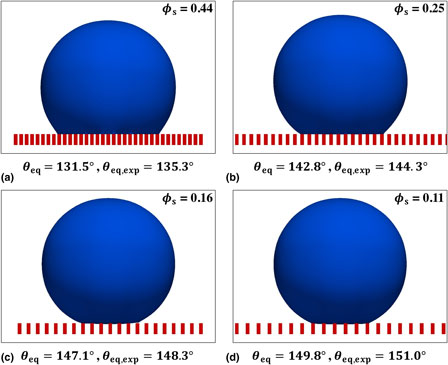Article contents
Developing a novel continuum model of static and dynamic contact angles in a case study of a water droplet on micro-patterned hybrid substrates
Published online by Cambridge University Press: 06 November 2018
Abstract

Modeling static and dynamic contact angles is a great challenge in studying wetting and de-wetting. We propose a new slip boundary model based on the Navier–Stokes equations, and establish a realistic continuum approach to simulate the contact line dynamics in 3-D. To validate our model, a water droplet interacting with micrometer-sized patterns of a hybrid hydro-phobic/-philic surface is studied numerically and compared with experimental measurements. Good agreement has been observed with four pillar spacings in the static, receding, and advancing modes. Moreover, details of the droplet–surface interaction are revealed, i.e., penetrations, sagging, local, and global contact angles.
Information
- Type
- Research Letters
- Information
- Copyright
- Copyright © Materials Research Society 2018
References
- 7
- Cited by

